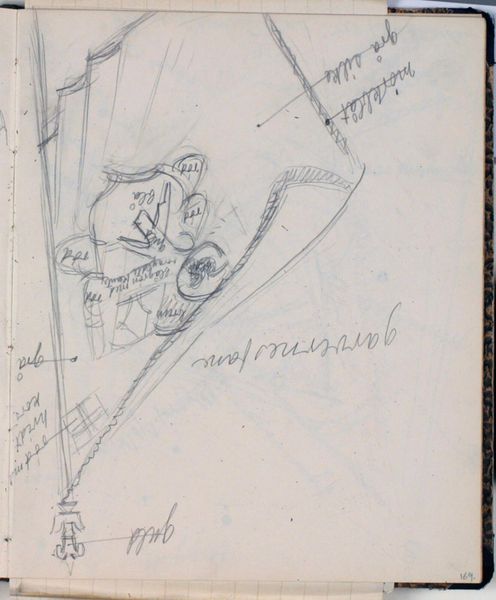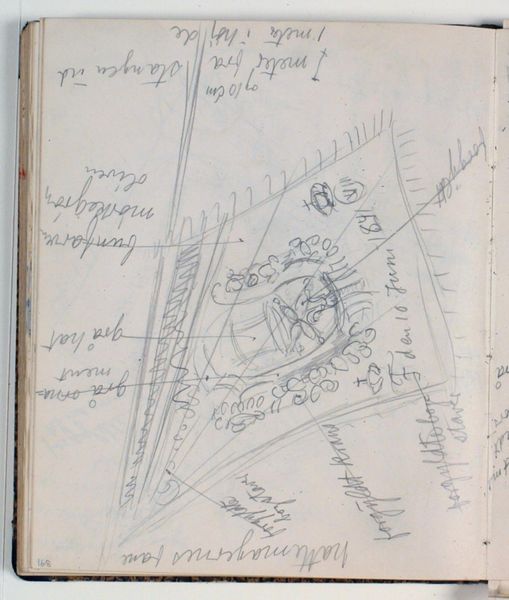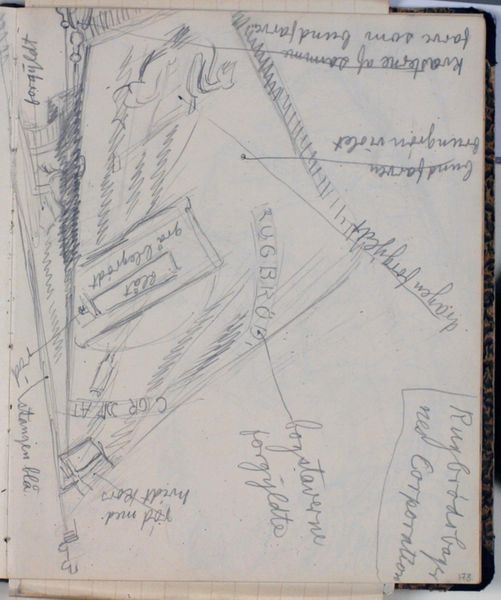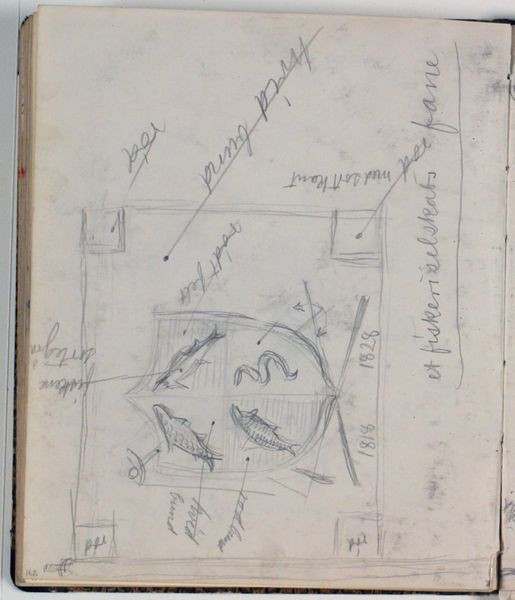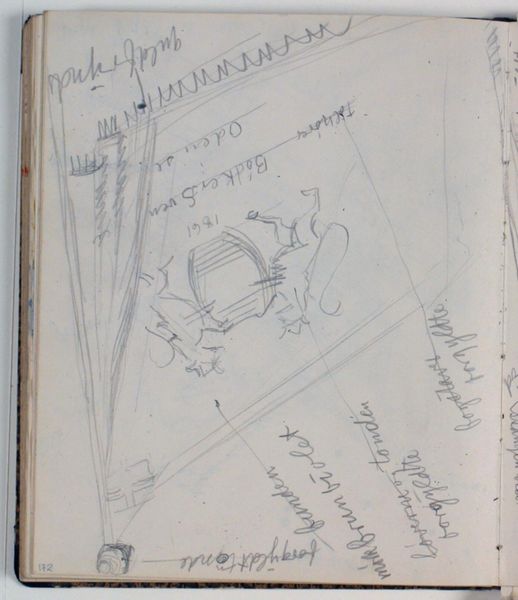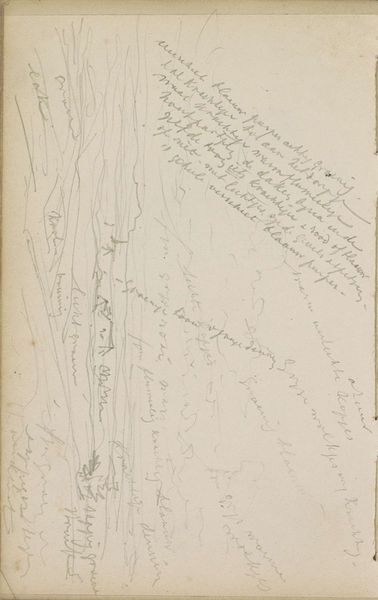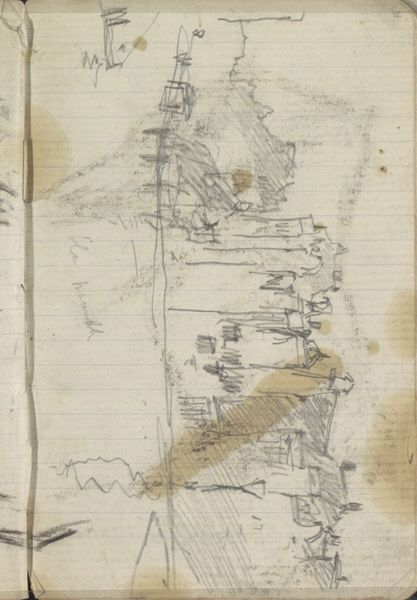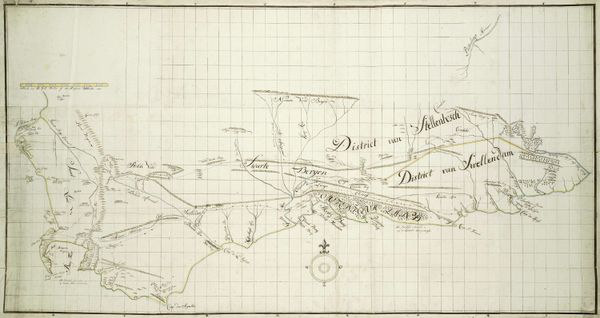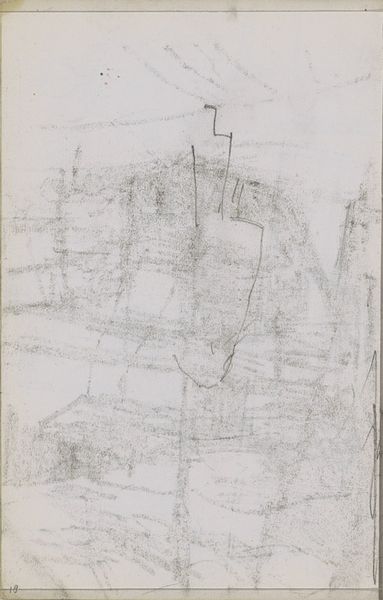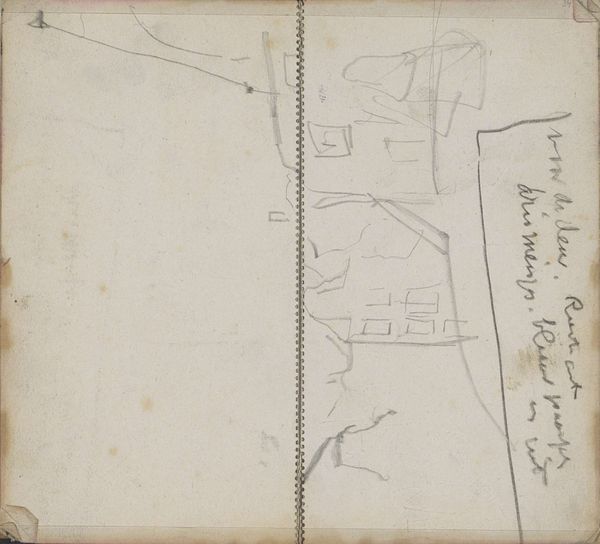
Studie af handskemesterlaugets fane. Farveangivelser 1930 - 1936
drawing, paper, pencil
drawing
paper
pencil
academic-art
realism
Dimensions: 226 mm (height) x 185 mm (width) x 112 mm (depth) (monteringsmaal), 221 mm (height) x 184 mm (width) (bladmaal)
Curator: Welcome. We’re standing before Niels Larsen Stevns' "Studie af handskemesterlaugets fane. Farveangivelser," a pencil drawing on paper from 1930 to 1936. It is currently held here at the SMK. Editor: My initial reaction is one of witnessing something nascent, still in the process of becoming. The scribbled notes and the unrefined quality suggest a glimpse into the artist's process, his attempts to capture something both representational and symbolic. Curator: Indeed. What interests me particularly about this piece is its connection to the socio-political sphere of artisan guilds. The gloves, likely emblems of skilled labor and collective identity, offer a commentary on early trade unionism and class consciousness. Stevns probably was making notes for a later artwork here, figuring out what would carry the meaning that mattered. Editor: Absolutely. Thinking about symbolism, consider how flags themselves act as powerful visual signifiers, embodying identity, power, and belonging. What I find so fascinating is the array of notes layered throughout this sketch, where specific color assignments—red, brown, green, and gold—offer a roadmap to understanding intended visual coding in the final artwork. The artist is making connections in real-time on the page, deciding what something means before rendering it completely. Curator: And in that careful coding, we see the hand of the artist embedding specific cultural values. The choice of "gold" might represent status or aspiration, but could there also be implications of exclusivity, depending on the guild's demographics at the time? How would class and access play out in the guild structure represented? I would wager to say, like modern organizations, guilds offered specific opportunity to a very limited selection of society at the time. Editor: Yes, I find it revealing how such seemingly objective color choices reveal layers of subjective, socially-informed values. To that point, even the act of sketching versus using vibrant paints and finalized images communicates certain ideas about intention. This preparatory glimpse is intimate and vulnerable in a way the final banner is not. Curator: Which underscores the importance of contextualizing the artwork within its time. Considering it was made between 1930 and 1936, a period of great social change, these colors and symbols would surely have resonated differently with its contemporaries than they do today. Editor: This sketch pulls back the curtain to a complex world of craft, labor, and symbolism. A great meditation on identity and purpose embedded within everyday objects. Curator: A profound glimpse into art and how even "minor" works can expose significant social and emotional information.
Comments
No comments
Be the first to comment and join the conversation on the ultimate creative platform.
